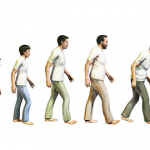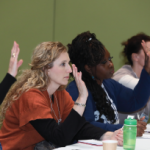A reasonable goal stemming from these findings, Dr. Wilkie said, is to find ways to prevent musculoskeletal conditions and pain before old age arrives.
A subsequent study at his center found that the strongest predictor of widespread pain was non-restorative sleep, with those reporting non-restorative sleep on most nights almost twice as likely to have widespread pain compared with those who don’t report regular non-restorative sleep. That was followed by anxiety, with those reporting definite anxiety having about a 50% higher chance of having widespread pain compared with those without anxiety.4
“Our work indicates that there’s also a number of modifiable targets that we can actually focus on that can prevent the onset of widespread pain in older adults,” Dr. Wilkie said.
He also pointed to data showing that as adults get older they are less and less likely to receive physical therapy, but more likely to receive medical therapy, in spite of the higher risk of complications from those medications.
Dr. Wilkie suggested that the first point of contact for pain in older adults should perhaps be a physical therapist while acknowledging that such an arrangement might not be as feasible in some countries as it is in others.
“Curing pain is not very much the goal,” he said. “Improving an individual’s ability to cope and to maintain their function should be the targets of our interventions.”
National Focus
Charles Helmick, MD—senior medical epidemiologist with the Arthritis Program at the Centers for Disease Control’s National Center for Chronic Disease Prevention and Health Promotion—said that national attention on the problem of pain is growing in the U.S.
A report by the Institute of Medicine in 2011 shined a spotlight on the issue, saying, among other things, that the collection and reporting of data on pain need to be improved; a national population-minded strategy on pain prevention and treatment needs to be developed; the ability of people to self-manage pain needs to be improved; education about pain for primary care providers needs to be improved; better research strategies are needed for the development of new agents; and longitudinal research on pain needs to be conducted.
Over 90% of women between 55 & 64 visit a doctor for lower back pain each year, according to National Services Scotland.1 About 70% of men in that age group see a doctor for that reason.
Dr. Helmick said the report was also a call for cultural transformation in how we think about pain, which “can be invisible to people.”


